An Atlanta couple and their son team up to build a multifaceted garden that’s rooted to the house.
Make Room to Grow
Usually, when people decide to reclaim an overgrown and neglected backyard, they hand off the job completely to someone else. Not this family. Carolyn and Hector Llorens and their son, John, each designed major parts of it, involving themselves in every detail. The result is a series of garden rooms that can be fun, relaxing, peaceful, or exhilarating. Each outdoor area links to a room in the house, bringing the outside in.
The Vegetable Garden
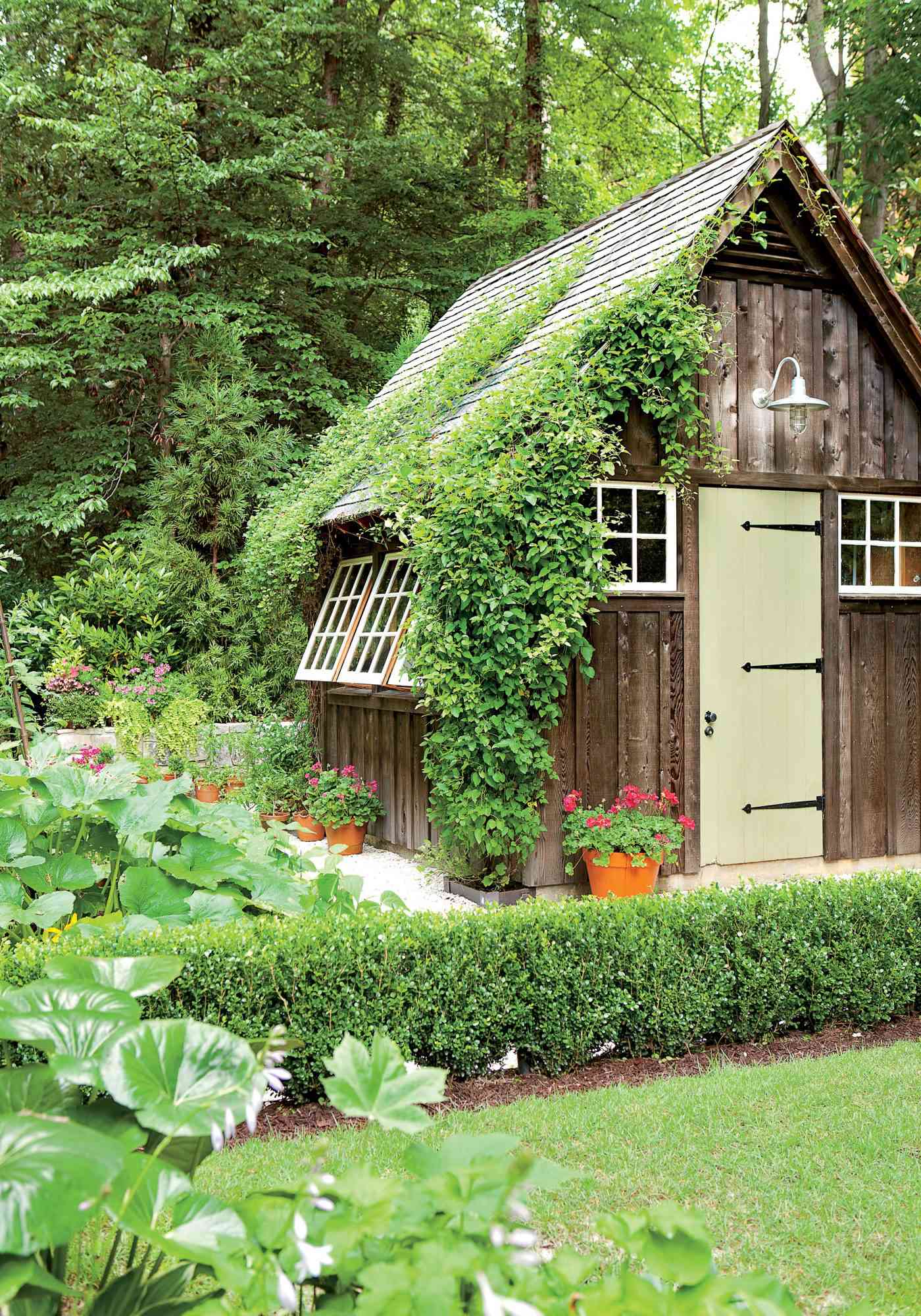
The Big Idea: The parking pad and ugly garage had to go. In went a formal vegetable garden edged with low-clipped boxwoods flanked on two sides by a garden shed and a chicken coop. Removal of the pavement added permeability to the site. A new screened porch that replaced the garage provides a comfortable viewpoint for eyeing the action outside.
The Details: Carolyn salvaged windows and doors from the garage to use for the shed and coop. Their roof pitches and cedar shakes match those of the house. Eco-friendly brownish gray stain gave board-and-batten cedar siding that was in Carolyn’s words «the color of Lucille Ball’s hair» a naturally weathered look.
The Vegetable Garden
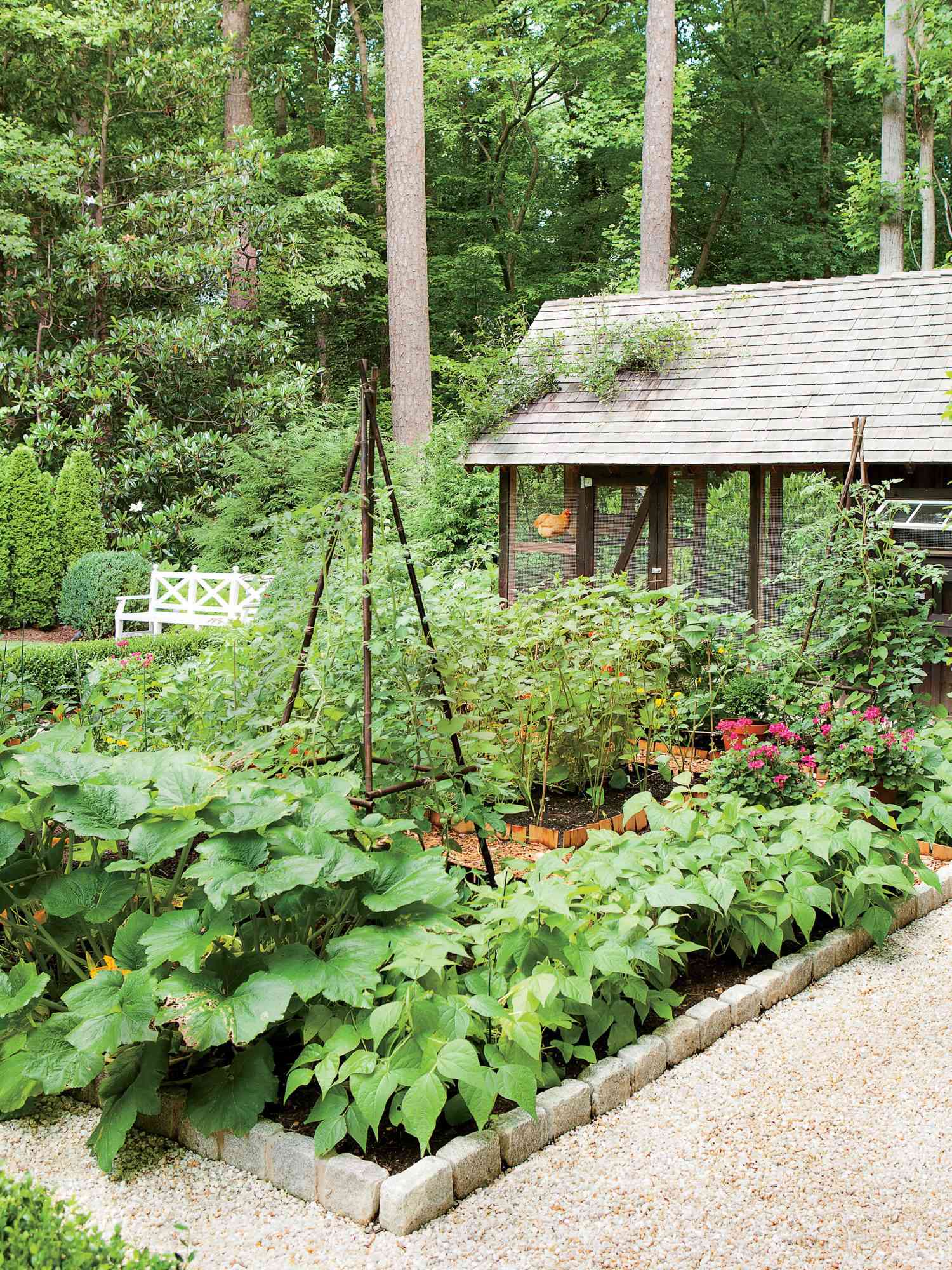
The Plants: John grows mainstay veggies and herbs—tomatoes, peppers, squash, cucumbers, beans, and basil—together with flowers for extra color. A climbing rose sprawls across the roof of the coop, while rampant sweet autumn clematis softens the roof of the shed.
The Box Garden
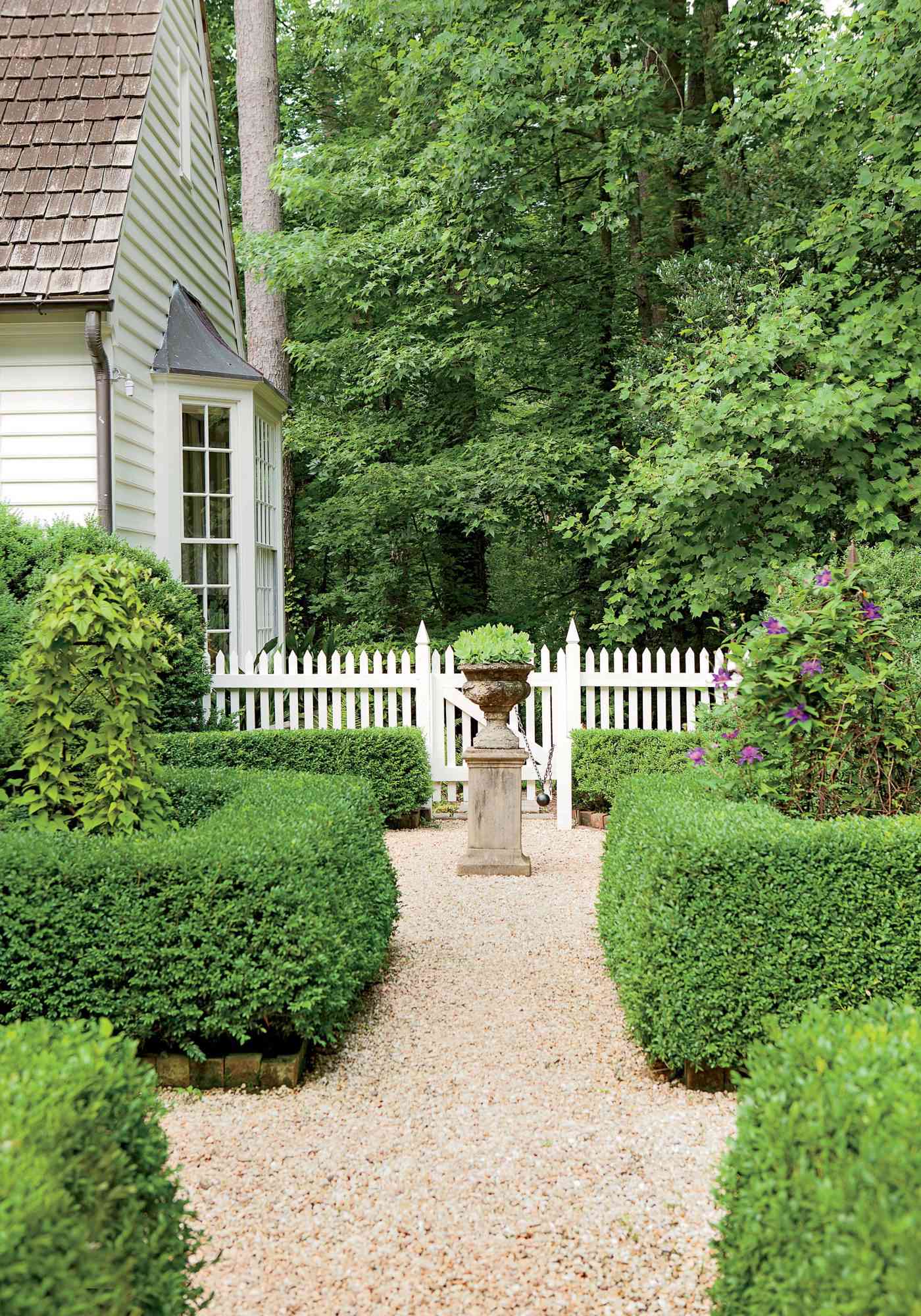
The Big Idea: Hector relocated existing boxwoods inside a picket fence to make an attractive, low-maintenance garden room that serves as an extension of the living room.
The Plants: Boxwoods and a planter filled with sedum compose a simple palette. A purple clematis vine trained upon a tuteur on the right adds a dash of color.
The Box Garden
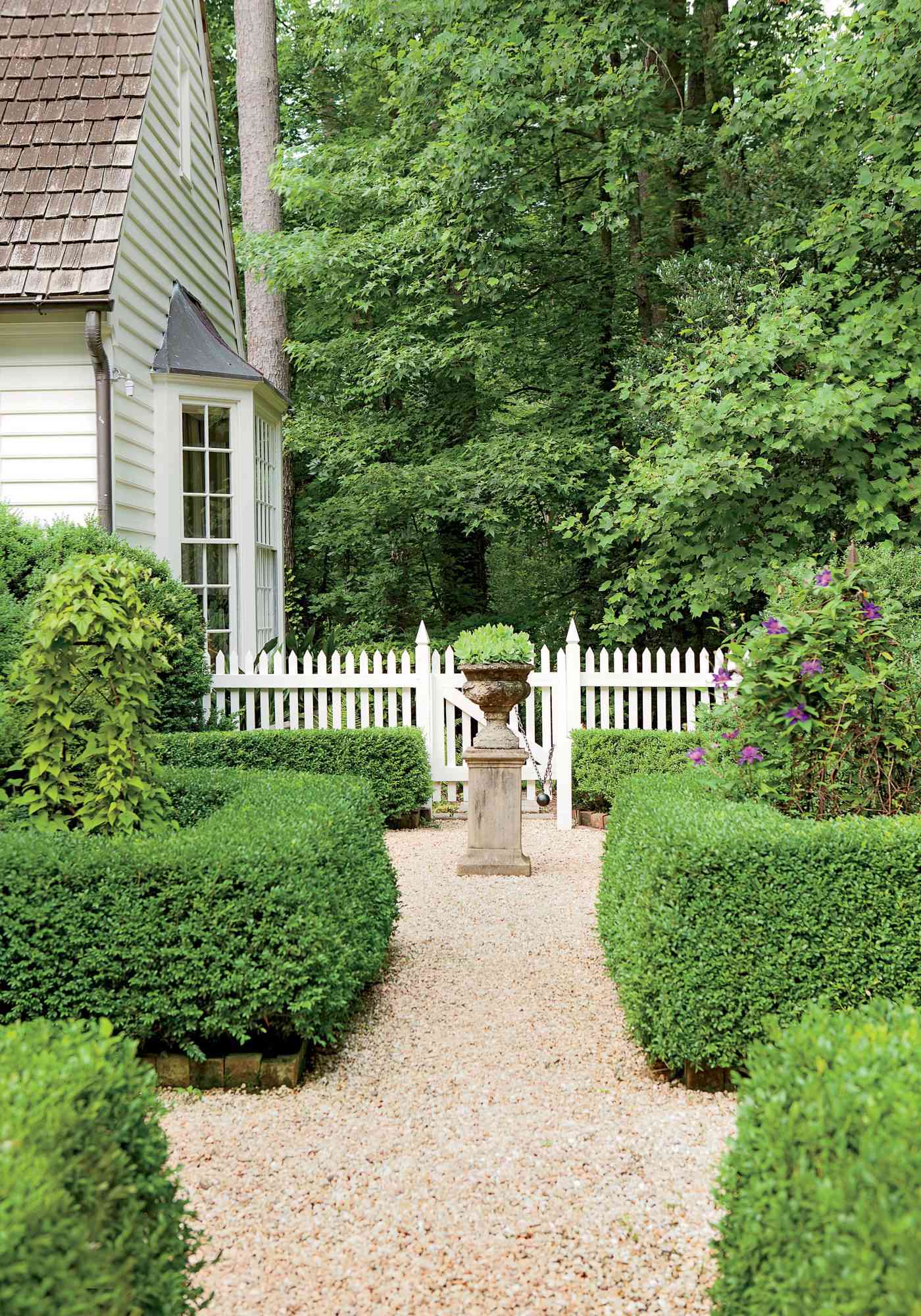
The Details: An urn planter atop a stone pedestal rests on gravel at the garden’s center. One axis runs through both the center of a gate and the pedestal to the screened porch in the distance. A cross axis takes your eye through the open French doors in the living room to the pedestal planter beyond. Everyone is pleased with the results. «If you can’t have that indoor-outdoor connection between your house and garden,» Carolyn observes, «you’ve really lost out.»
We Love This!
An iron chain and cannonball automatically close the gate in the box garden.
The Lawn

The Big Idea: The goal was to create an open, peaceful space next to the densely planted vegetable garden that could be enjoyed from both outdoors and indoors.
The Plants: Arborvitaes and boxwoods border the rectangular lawn. Tall hardwoods in the back provide dappled shade.
The Details: The lawn marks the transition between the vegetable garden on the right and the box garden on the left. «It’s on axis with the window in the butler’s pantry, so when people come and fix a drink, they look straight into it,» notes Carolyn. A white bench at the far end serves as a focal point.
Notice the Details: The Coop

Carefully planned little touches like these can make a huge impact in contained spaces where visitors stroll slowly.
Backyard chickens are all the rage, because people crave fresh eggs as much as homegrown veggies. Carolyn’s coop matches the style of the shed, giving her beloved Buff Orpington hens a home that lesser chickens would absolutely die for.
Notice the Details: The Shed
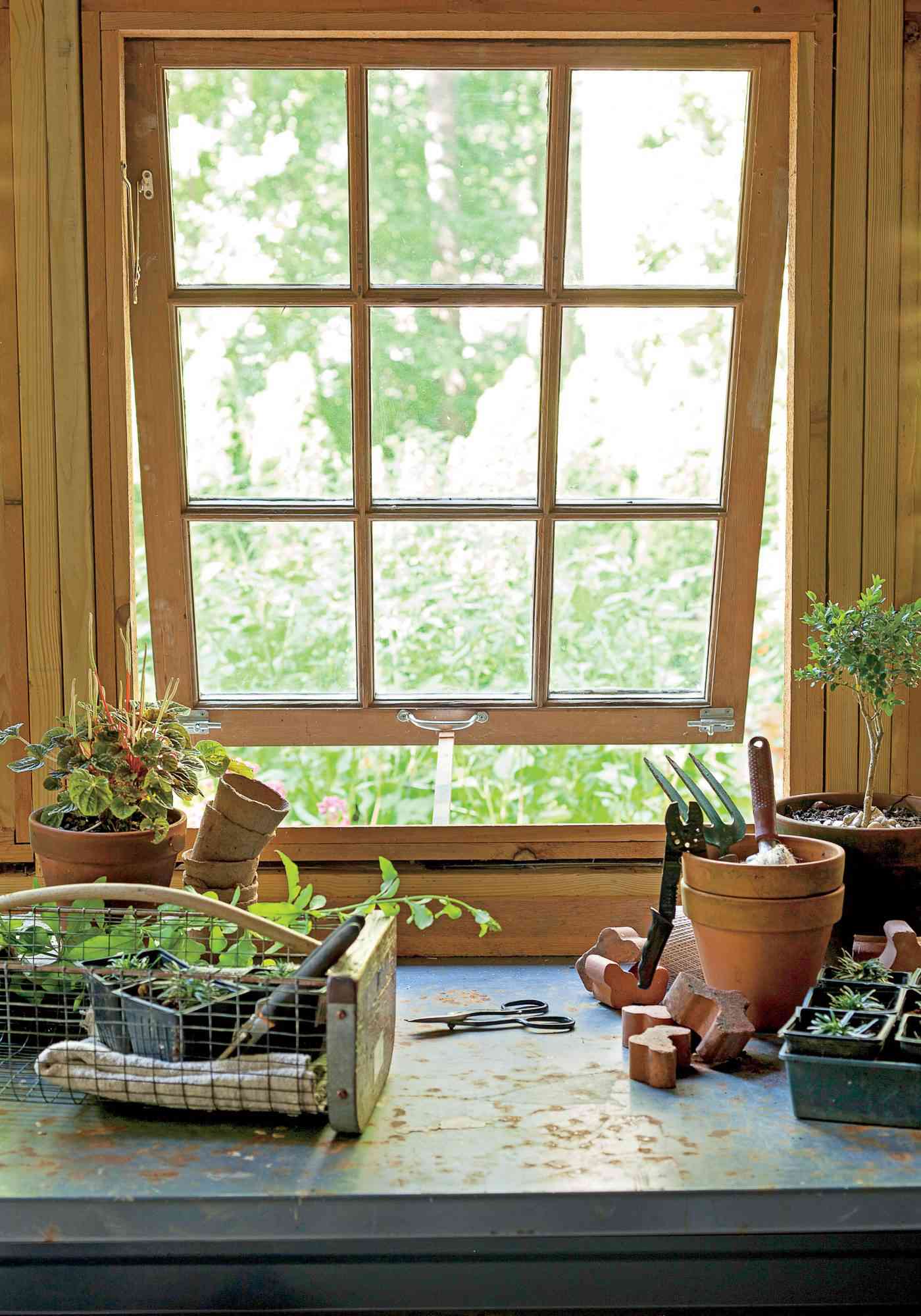
A potting shed is always better when it has a view. Carolyn salvaged the old windows from the torn-down garage and hung them using piano hinges so they open out. The shed serves a number of functions: In addition to housing the usual gardening tools and supplies, it’s also used as a greenhouse to germinate seedlings for the garden and comes in handy for overwintering tender plants that need to be brought in from the cold.
Notice the Details: The Borders
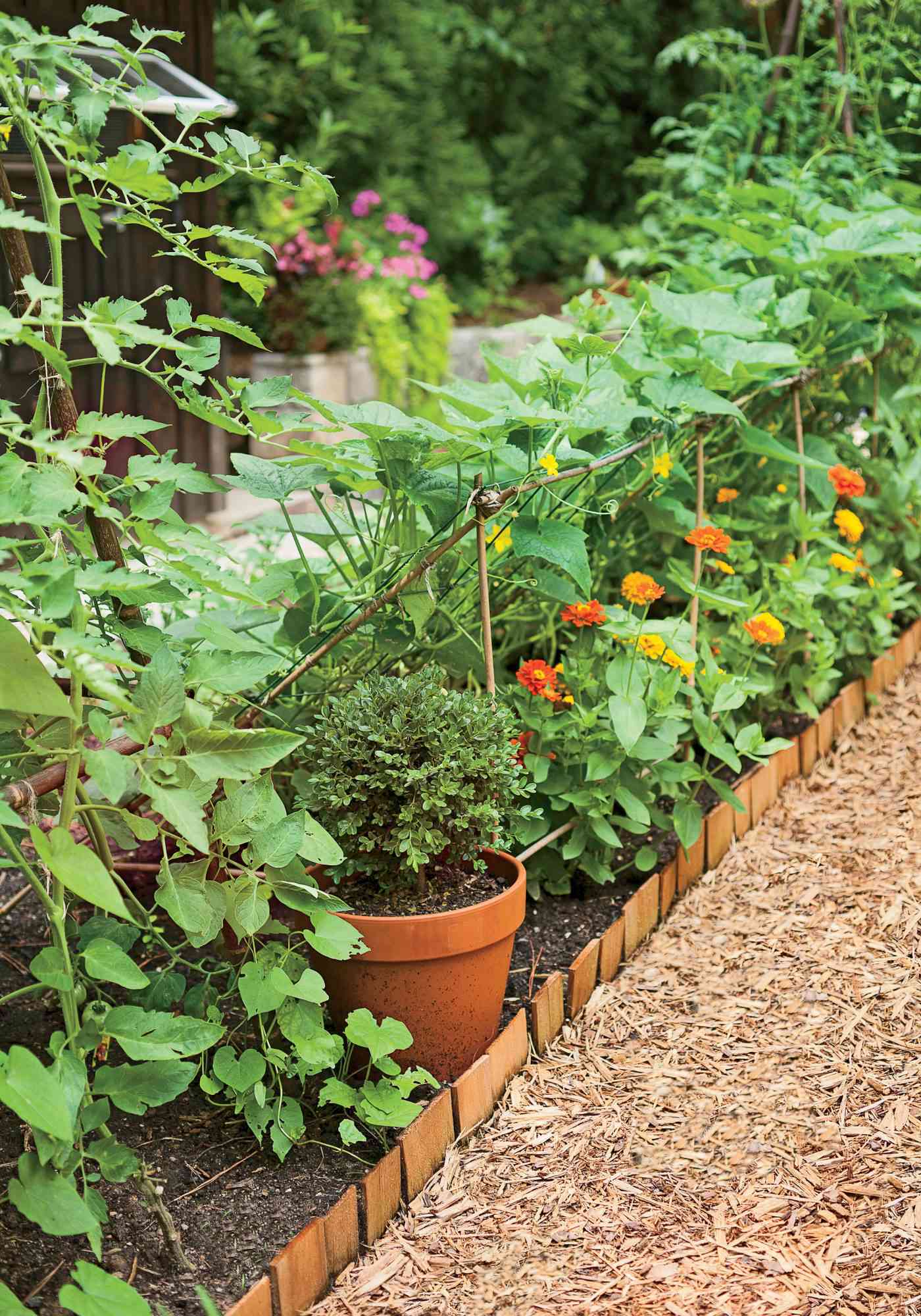
Flowers and vining vegetables grow together in a narrow bed. John built this lean-to frame out of bamboo poles, cord, and wire screen. Cucumber vines recline on the angled screen, leaving room below for colorful zinnias. Fertile soil keeps vegetables producing. «We put down humus (decomposed organic matter) that has spooky growing power,» Carolyn says. «John grew bell peppers with walls so thick you could hammer a nail with them.»
Notice the Details: The Path
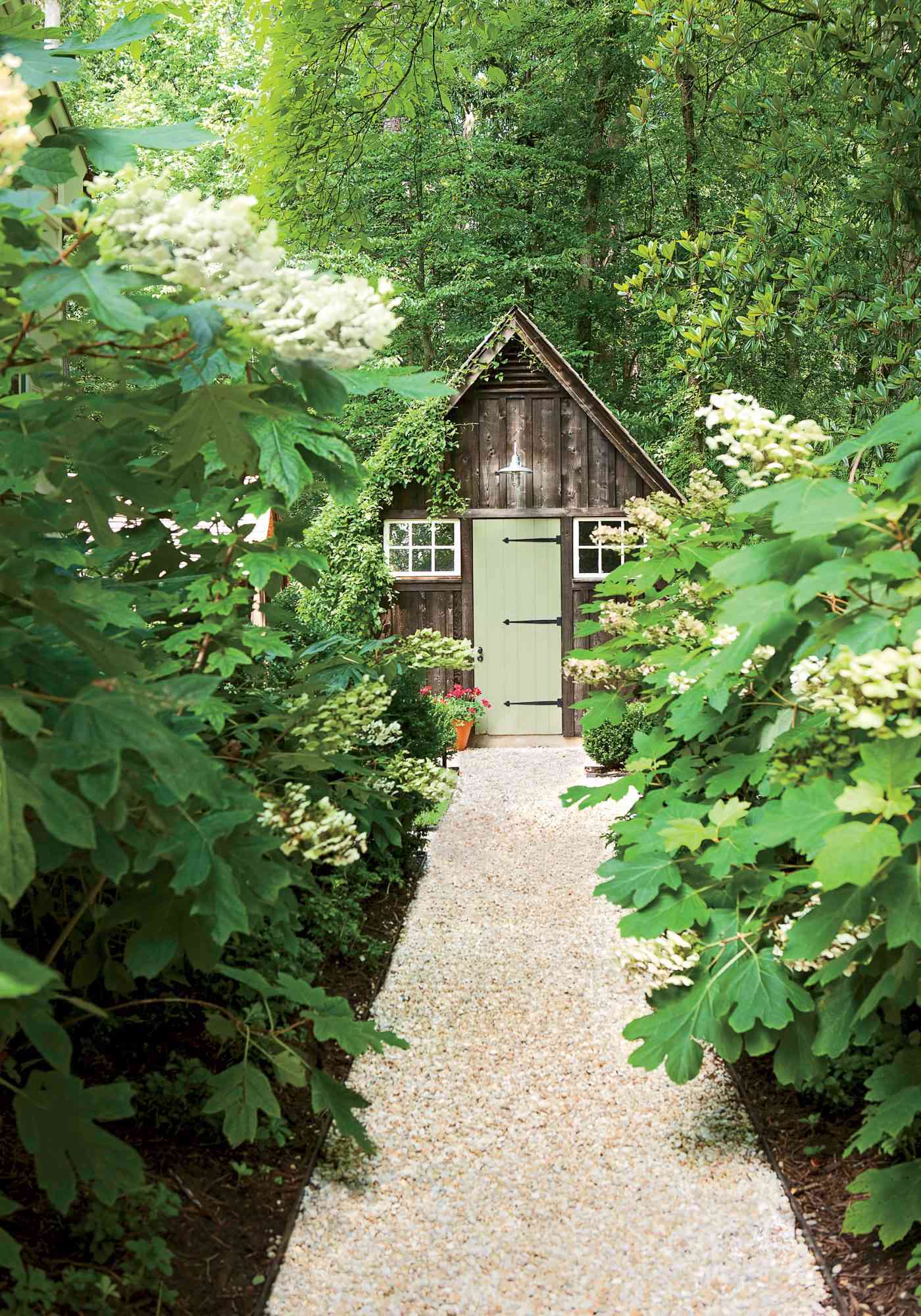
An intriguing destination at the end of the path beckons you to enter the back garden from the parking area. Native oakleaf hydrangeas partially obscure the shed, piquing curiosity about what lies ahead.